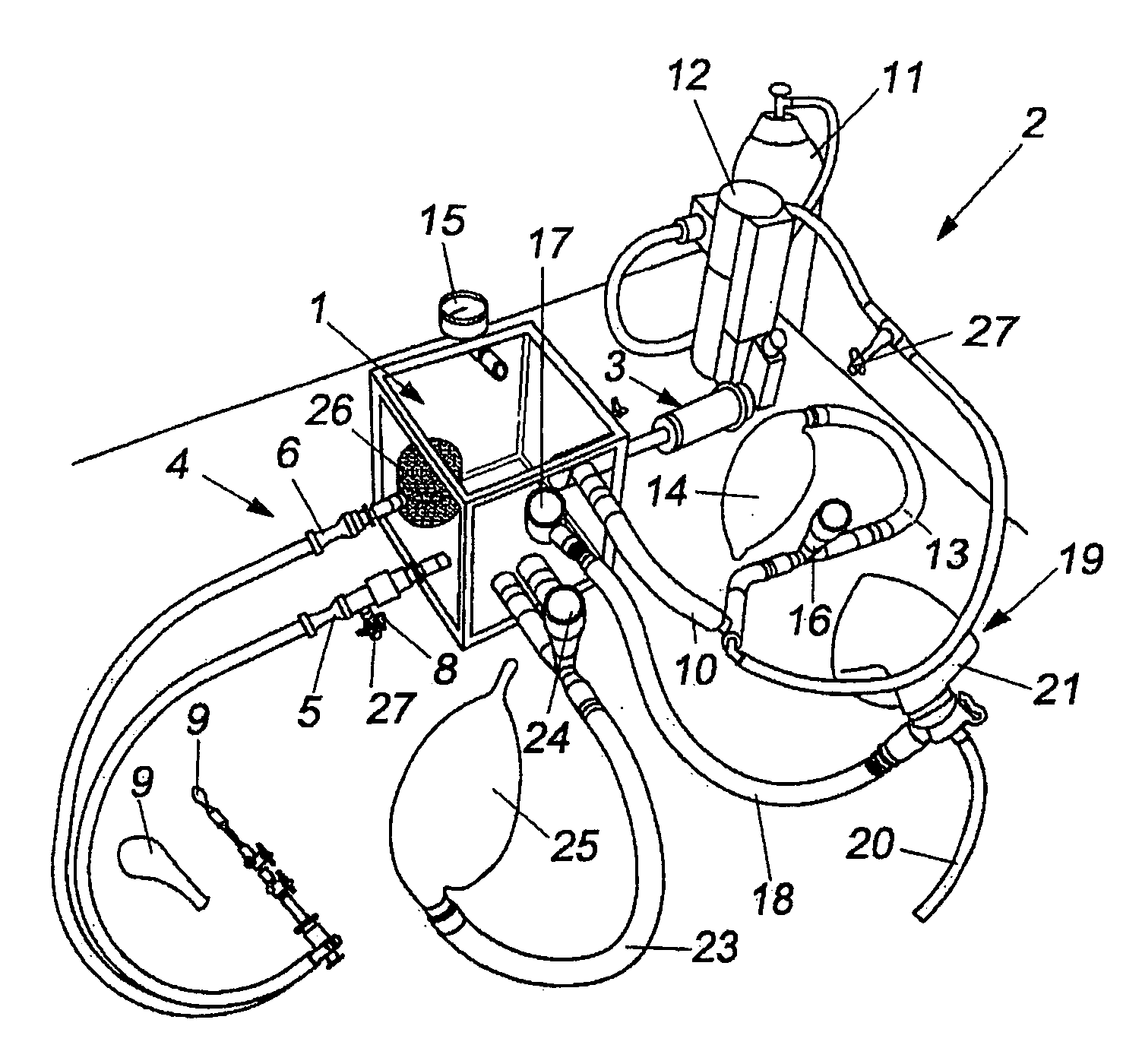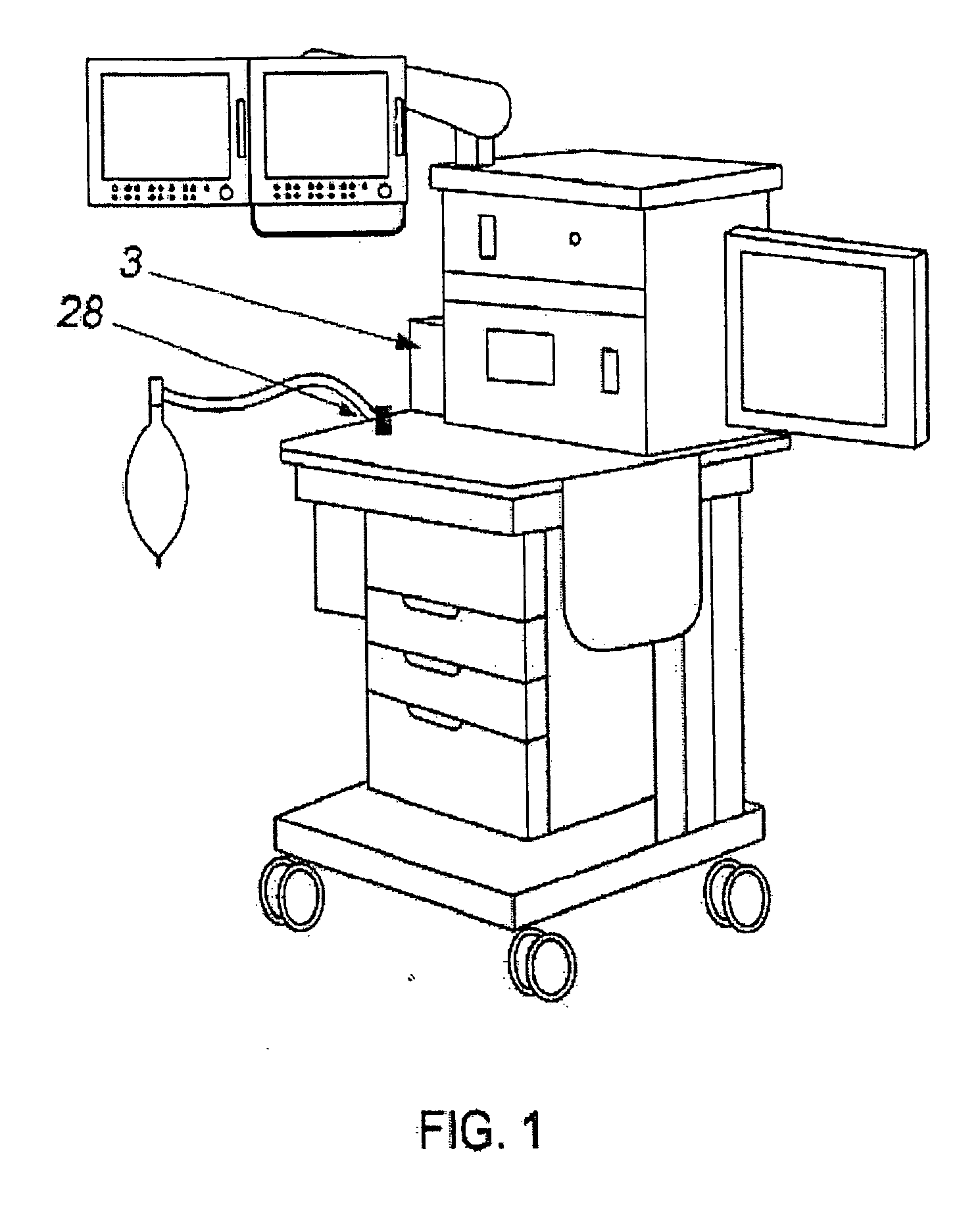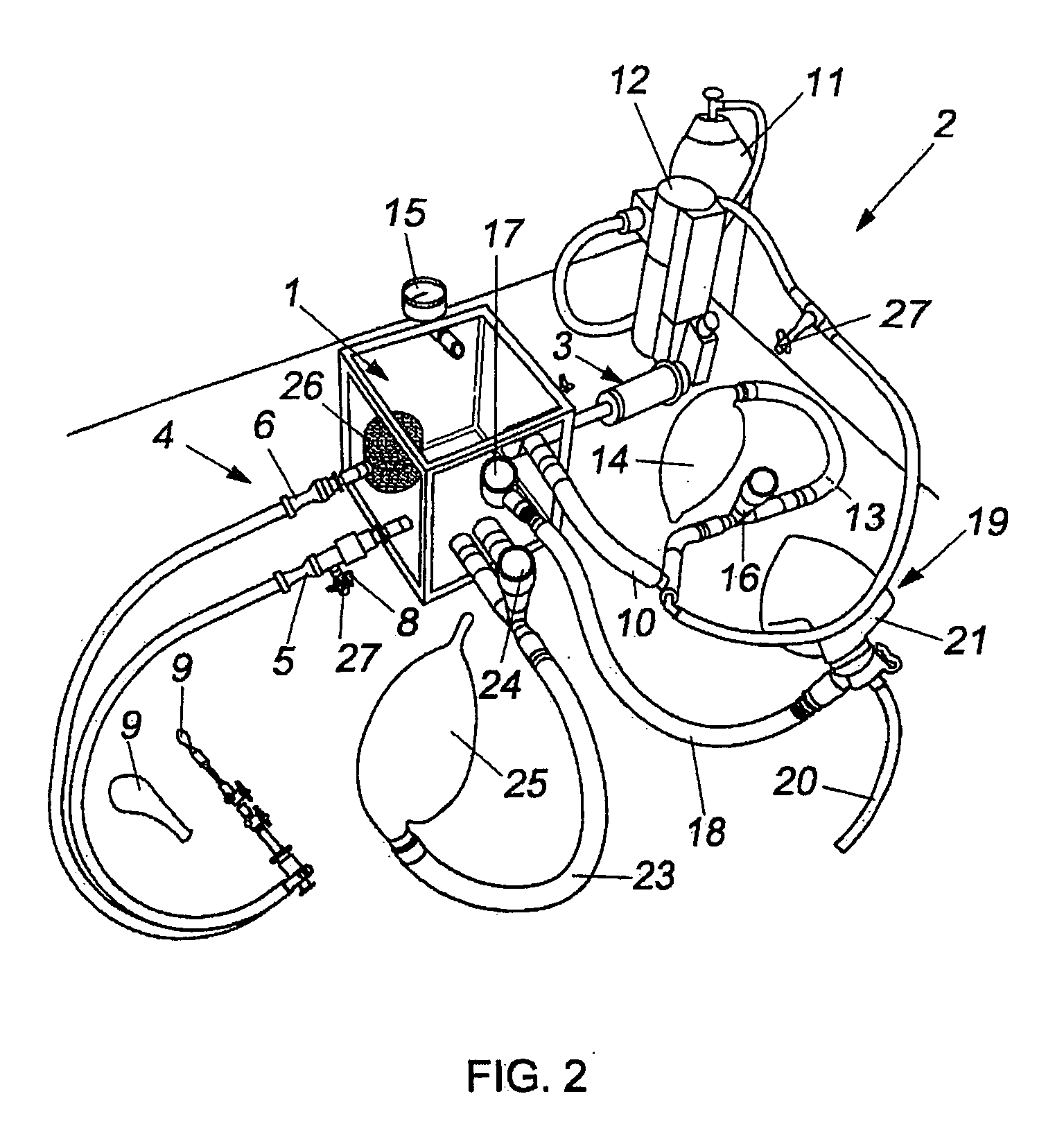Anaesthesia machine simulator
a simulator and anaesthesia technology, applied in the field of anaesthesia machines, can solve the problems of ventilating patients, anaesthesia doctors are prone to having more clinical ventilation problems than other specialists, and the problem of ventilating patients is not easy to solv
- Summary
- Abstract
- Description
- Claims
- Application Information
AI Technical Summary
Benefits of technology
Problems solved by technology
Method used
Image
Examples
example 1
Leak Test
[0074]When an anaesthesia machine is fully sealed, that is, when there are no leaks through any of the connections between its components, the pressure exerted in the interior thereof remains constant with time.
[0075]In order to perform this check, the anaesthesia machine introduces a known pressure into the circuit through the piston (3), as a standard rule, 30 cm H2O, and, once the machine is pressurised to this pressure, it interrupts the flow and calculates the pressure loss that takes place in one minute, thus calculating the leaks in the anaesthesia machine in one minute. What other machines do is to calculate the gas flow which they need to continue supplying during that minute in order for the pressure to remain at 30 cm H2O for one minute, leading to the same calculation.
[0076]This same test may be easily simulated in the simulator by allowing the input of gases through the flow generator (2) towards the container (1), exerting pressure with the piston (3) and meas...
example 2
Compressible Volume
[0077]In an open circuit, the gas pressure supplied to a patient is directly transmitted thereto. On the other hand, in a circular circuit, the volume of gas contained in the interior thereof is capable of compressing when a pressure is exerted on the piston (3), just like when a pressure is exerted on a syringe piston, whilst the open end is kept blocked.
[0078]In order to perform this check, the anaesthesia machine introduces a known volume of air into the circuit through the piston, concertina bellows, turbine or other flow generator, which translates into an increase in the internal circuit pressure that is measured by the manometer. If the pressure remains constant, the machine calculates, from the volume and the pressure, the circuit compliance (volume / pressure), which in most cases ranges between 5 and 7 (ml / cm H2O), depending on each machine's internal volume. If this compliance coincides with that which corresponds to the machine on the basis of its intern...
example 3
[0079]The time constant is the time which a given container takes to fill up or empty out by 63%, and is an exponential process. Thus, 63% of filling up or emptying out of the container will take place in one time constant, 86% will take place in two time constants, and 95% will take place in three time constants.
[0080]The time constant of an anaesthesia machine depends on the internal circuit volume and the fresh gas flow used, minus the circuit leaks. The system's efficiency or fresh gas flow utilisation percentage also affect the time constant.
[0081]Currently, there are different ways to introduce the fresh gas flow into the anaesthesia machine; (i) one of these systems supplies the air through the input conduit (10), jointly with the anaesthesia gases, coming from the vaporiser (13) and mixed with O2 coming from the source (11). This fresh gas is taken to a reservoir chamber (represented by the sealed container (1) in the simulator), in order to be pushed by the con...
PUM
 Login to View More
Login to View More Abstract
Description
Claims
Application Information
 Login to View More
Login to View More - R&D
- Intellectual Property
- Life Sciences
- Materials
- Tech Scout
- Unparalleled Data Quality
- Higher Quality Content
- 60% Fewer Hallucinations
Browse by: Latest US Patents, China's latest patents, Technical Efficacy Thesaurus, Application Domain, Technology Topic, Popular Technical Reports.
© 2025 PatSnap. All rights reserved.Legal|Privacy policy|Modern Slavery Act Transparency Statement|Sitemap|About US| Contact US: help@patsnap.com



